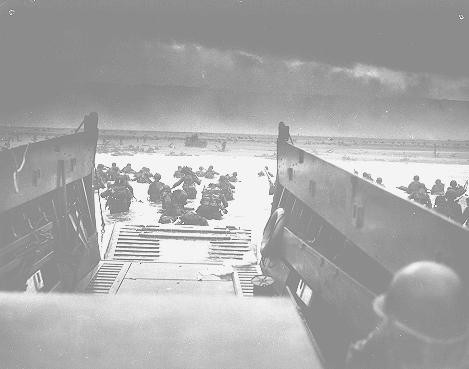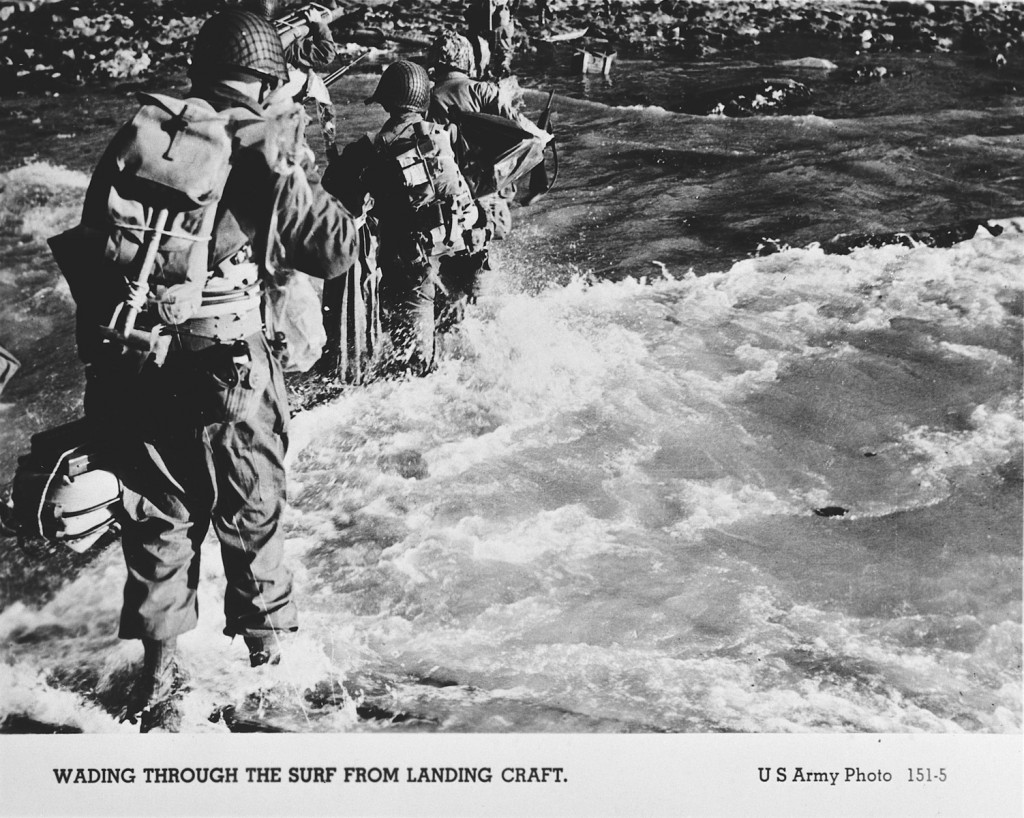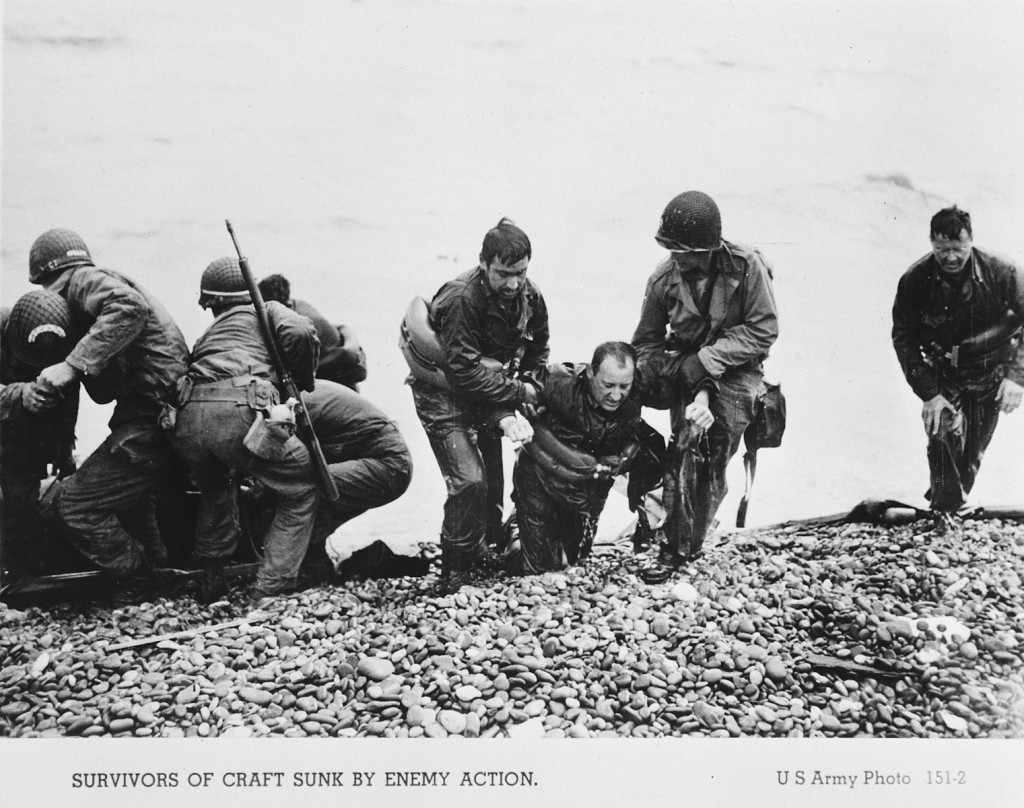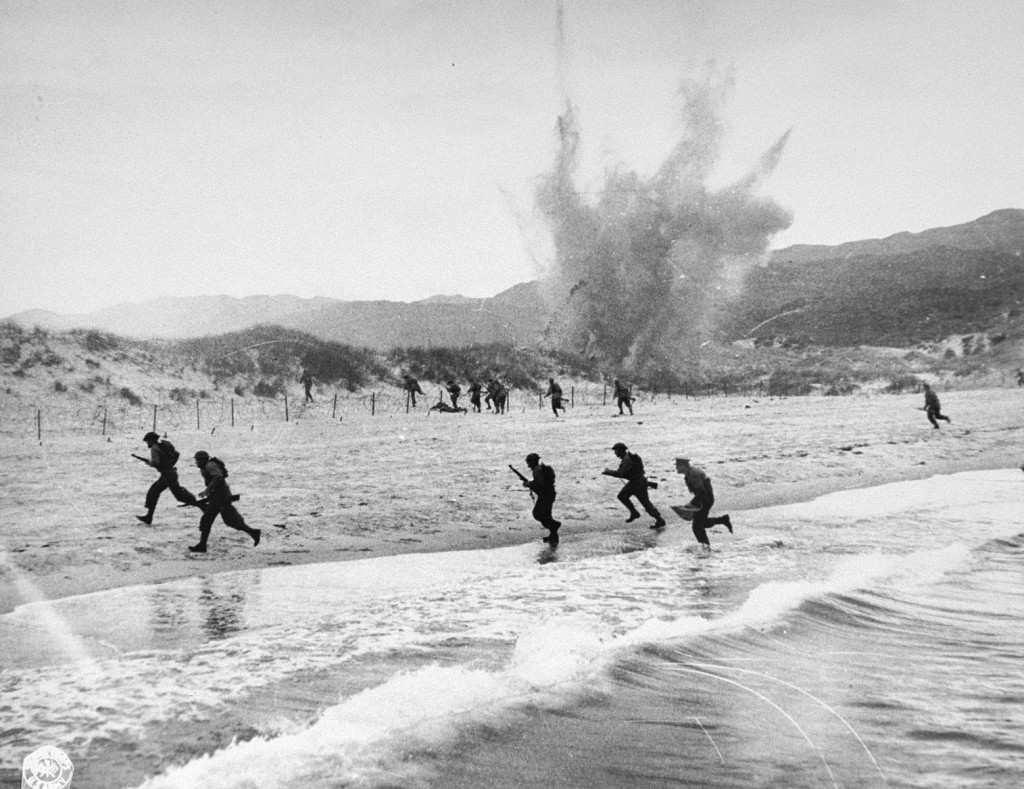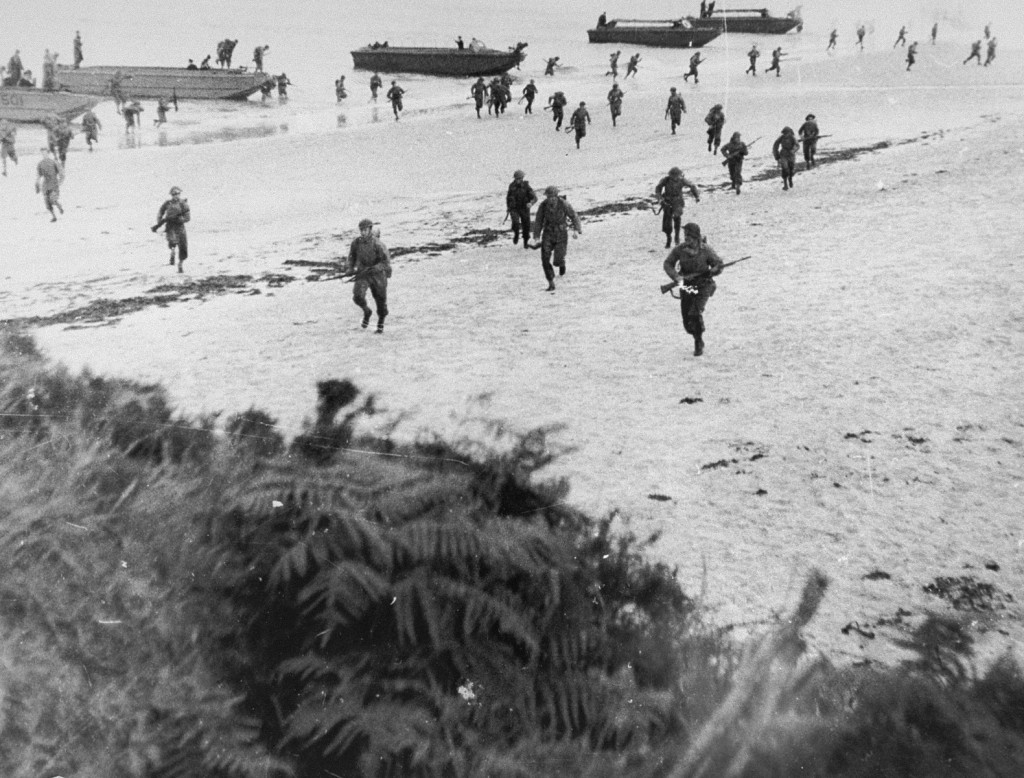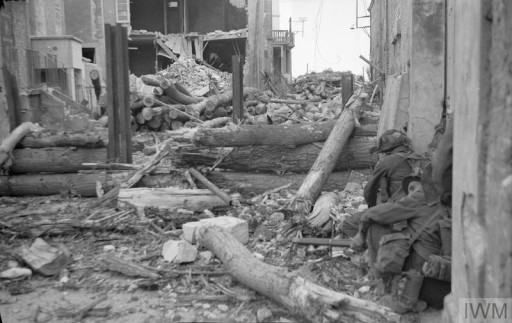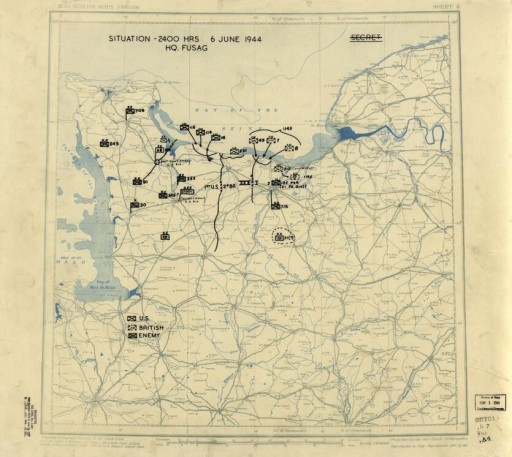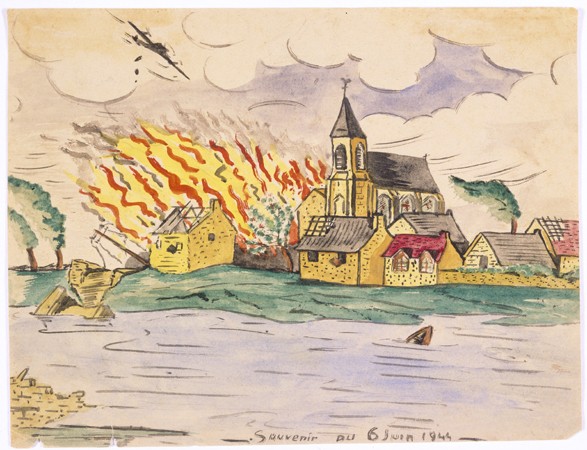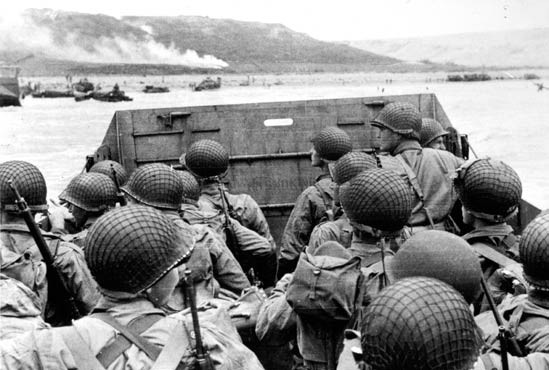
D-Day
The D-Day invasion of Normandy, France, on June 6, 1944, marked the launch of Operation Overlord. Operation Overlord was the code name for the invasion of Normandy. The Normandy Campaign proved to be one of the most important Allied military operations of World War II. It was key to the western Allies’ victory over Germany. By the end of June, more than 850,000 Allied troops had come ashore on the beaches of Normandy.
Key Facts
-
1
Operation Overlord began on June 6, 1944. This date is known as “D-Day.” D-Day was the largest amphibious invasion in history. More than 150,000 primarily American, British, and Canadian troops were deployed that day by air and sea.
-
2
D-Day marked the beginning of the end of the German occupation of France. Two and a half months later, Allied forces liberated Paris.
-
3
By June 1944, more than five million Jews had been murdered by Nazi Germany and its collaborators in the Holocaust (1933–1945). Nevertheless, Operation Overlord likely contributed to the survival of hundreds of thousands of Jews in western and central Europe.
D-Day took place on June 6, 1944. It is one of the best-known and most important moments of the US war effort during World War II (1939–1945).
On June 6, 1944, Allied troops launched a military operation code named Operation Overlord. On that day, US, British, and Canadian troops crossed the English Channel and landed on the beaches of Normandy, France. These troops were augmented by men from many other countries, including: France, Norway, Czechoslovakia, Poland, the Netherlands, Belgium, Luxembourg, Greece, Australia, and New Zealand.
Today, “D-Day” commonly refers to June 6, 1944, the launch date of Operation Overlord. In military terminology, however, “d-day” refers to the start date of any military operation.
D-Day marked the opening of an Allied front in western Europe. In the months that followed, the western Allies (led by Britain and the United States) drove German troops out of France and other western European countries. They eventually crossed into Germany. At the same time, the Soviet Union (also a member of the Allies) battled German forces from the east. Nazi Germany surrendered unconditionally on May 7–8, 1945, almost a year after D-Day.
The Events of D-Day and the Normandy Campaign
Operation Overlord was organized under the overall command of US General Dwight D. Eisenhower, Supreme Commander, Allied Expeditionary Force. British General Bernard Montgomery commanded the ground forces landing in Normandy.
During the operation, 133,000 Allied ground troops landed on five beaches stretched over roughly 50 miles of Normandy’s coastline. The beaches were code named (west to east): Utah, Omaha, Gold, Juno, and Sword. US troops hit the beaches of Utah and Omaha, while British and Canadian units stormed the beaches of Gold, Juno, and Sword. On the night before the amphibious landings, more than 23,000 US, British, and Canadian paratroopers landed in France behind the German defensive lines by parachute and glider. Some 195,000 naval personnel and merchant mariners, 7,000 vessels, and more than 11,500 aircraft supported the initial invasion.
At first, under the command of Field Marshals Gerd von Rundstedt and Erwin Rommel, the Germans held the advantage in battle positioning. The German Seventh Army, with six divisions, including one tank division, was in place to defend northwest France from any invading forces. However, the Allies had an overwhelming advantage in naval and air power. Moreover, a successful Allied deception plan had led the Germans to believe the point of the attack would be further north and east on the coast near Calais and the Belgian border. The Germans moved slowly to reinforce the Normandy defenses after the initial landing, just in case the Allies were trying to divert attention from a larger attack elsewhere.
“‘This is D-Day,’ the BBC announced at twelve. ‘This is the day.’ The invasion has begun...Is this really the beginning of the long-awaited liberation? The liberation we’ve all talked so much about, which still seems too good, too much of a fairy tale ever to come true? Will this year, 1944, bring us victory? We don’t know yet. But where there’s hope, there’s life. It fills us with fresh courage and makes us strong again.”
—Anne Frank, diary entry dated June 6, 1944
By nightfall of June 6, more than 150,000 Allied servicemen had made it by air or sea onto French soil. Allied troops had suffered more than 10,000 casualties (servicemen who were killed, wounded, or missing), with 4,400 confirmed dead. British and Canadian forces suffered around 3,700 casualties; and US forces suffered about 6,600 casualties. German forces suffered a casualty rate of between 4,000 and 9,000 men.
On D-Day itself, the Allies initially failed to reach their planned objective of linking the beachheads or driving inland to a distance of 9 miles. On June 11, however, Allied troops overcame German resistance. They united the invasion beaches into one large beachhead. But despite Allied military superiority, the Germans contained Allied troops in their slowly expanding beachhead for six weeks. Today, this battle is commonly known as the Battle of Normandy.
The Allied Liberation of France
On July 25, 1944, with the launching of Operation Cobra, Allied troops broke out of the Normandy beachhead near the town of Saint-Lô. They began to pour into northern France. By mid-August, Allied troops encircled and destroyed much of the German army in the Normandy region near Falaise.
Spearheaded by General George Patton's Third Army, the Allies then raced across northern France. On August 25, the Allies liberated Paris, with French forces taking a prominent role. In September, US troops crossed into Luxembourg, which at the time was annexed to the German Reich.
Many in the United States hoped that the European war would be over by the end of 1944. However, the western Allied advance slowed. In mid-December 1944, Nazi Germany launched a counteroffensive that became known as the Battle of the Bulge. The Allied victory in the Battle of the Bulge proved decisive. It ultimately led to the Allied victory in World War II.
The success of D-Day and Operation Overlord proved crucial to defeating Nazi Germany during World War II.
D-Day and the Holocaust
By D-Day, Nazi Germany and its allies and collaborators had already murdered more than five million European Jews.
As Allied troops stormed ashore on D-Day, Nazi Germany and its allies and collaborators were unrelentingly carrying out the mass murder of Europe’s Jews. Hundreds of miles away, Nazi German and Hungarian officials were in the midst of a massive deportation operation of Jews from Hungary. Between May 15 and July 9, 1944, they deported 420,000 Jews to the Auschwitz-Birkenau killing center. There, Nazi authorities murdered most of these people in gas chambers.
Today, it is clear that an Allied victory over Nazi Germany was the only way to stop the Holocaust (1933–1945).
Nazi authorities continued to murder Jews until the final days of World War II. But the Allied invasion of France and subsequent victories likely saved hundreds of thousands of Jews in western and central Europe from being murdered in the Holocaust. As Allied and Soviet troops moved across Europe against Nazi Germany, they encountered concentration camps, mass graves, and other sites of Nazi crimes where Europe’s Jews had been mass murdered by the Nazis and their allies and collaborators. Though liberation of Nazi camps was not a primary objective of the Allied military campaign, US, British, Canadian, and Soviet troops freed prisoners from their SS guards, provided aid to survivors, and collected evidence later used in war crimes trials.
Critical Thinking Questions
Genocide often happens under cover of war. What was the relationship between the progress of the war and the mass murder of Europe’s Jews?
How many Jews had been murdered by D-Day? What camps and killing centers were still in operation?
When did Allied forces in the west begin to encounter concentration camps? When did Soviet forces encounter Nazi camps in German-occupied Poland?
2024 marks the 80th anniversary of D-Day. Why is it important to learn about this event?




